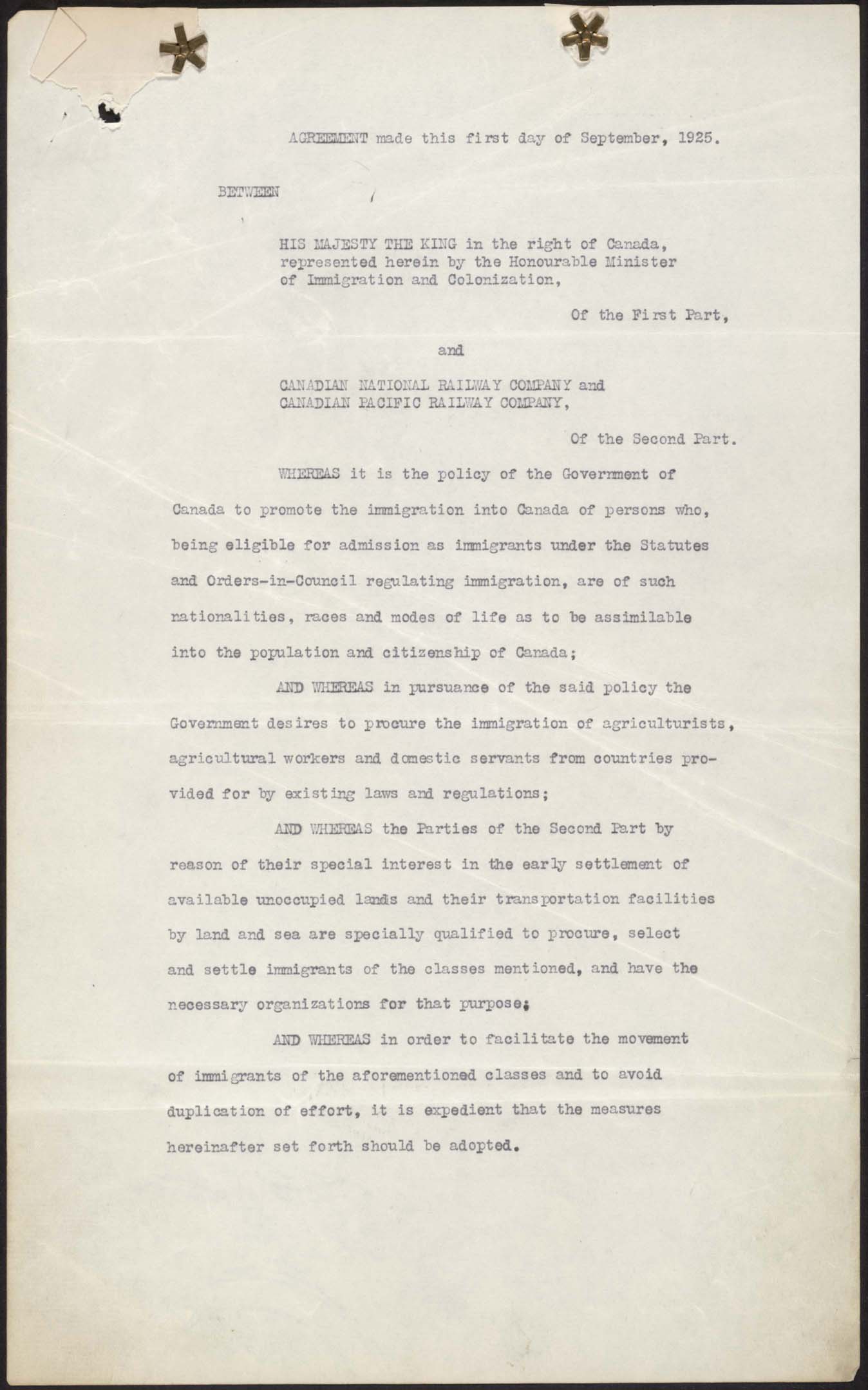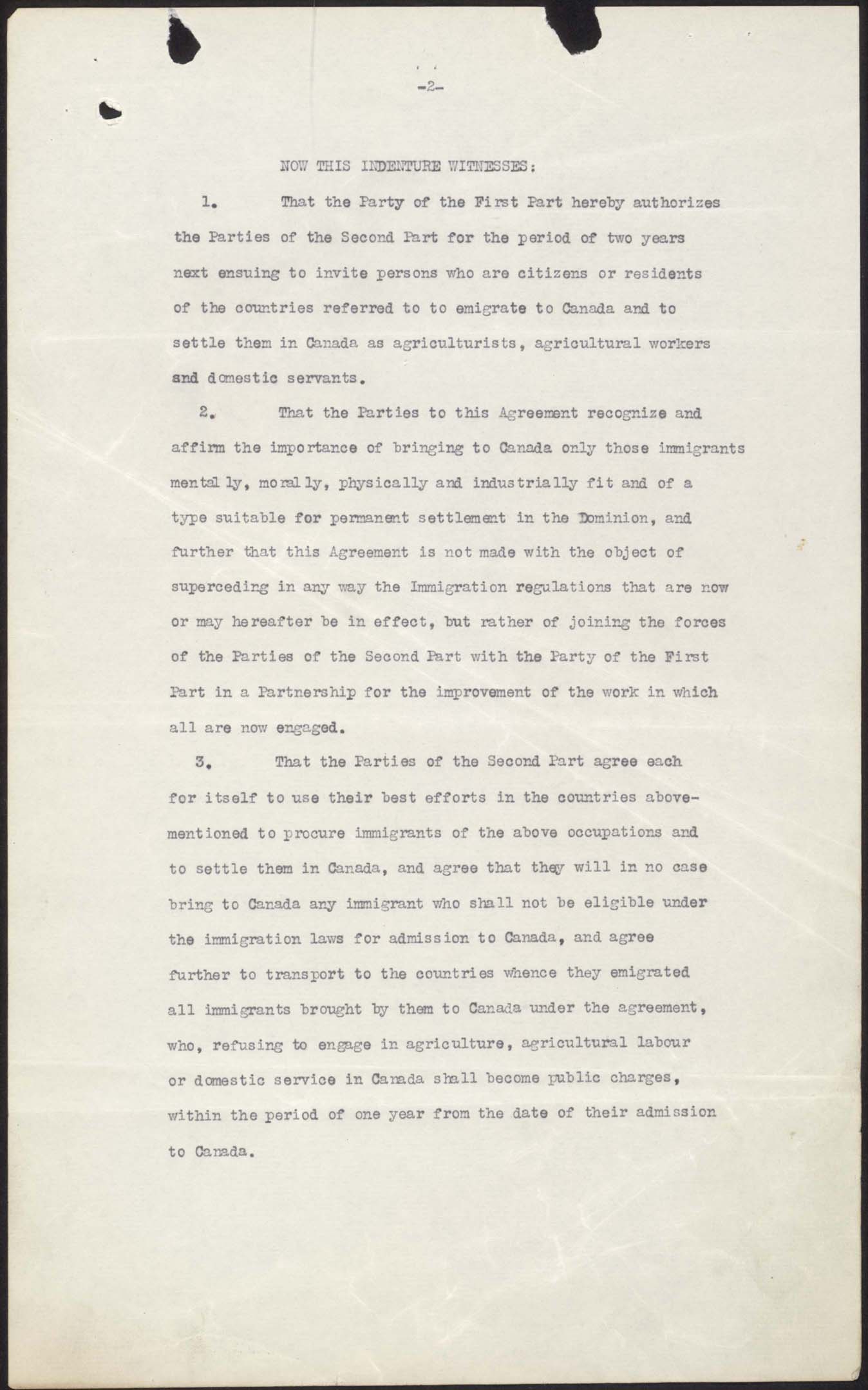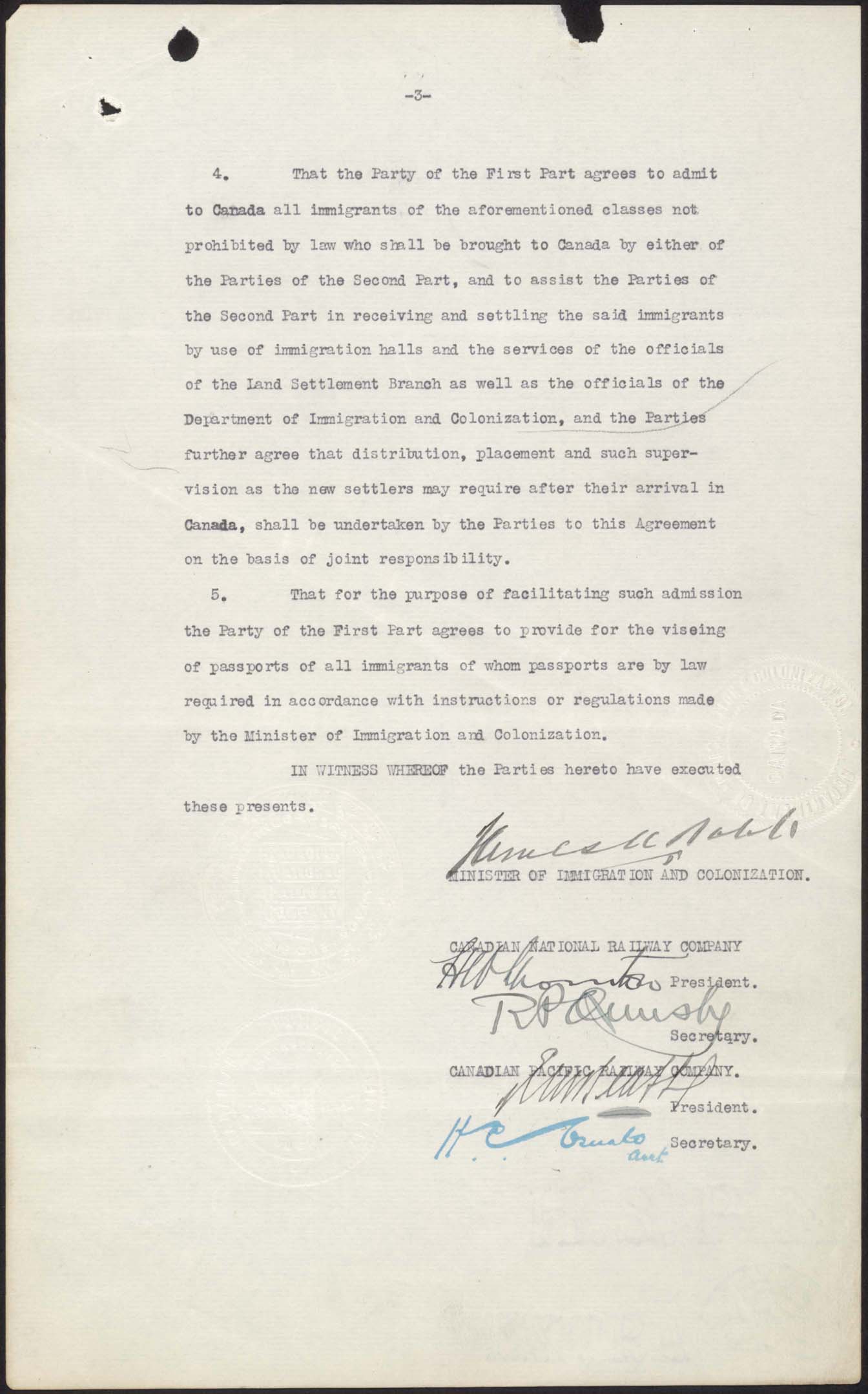In September 1925, the Canadian government formalized an agreement with the Canadian Pacific Railway (CPR) and the Canadian National Railway (CNR) allowing the railway companies to control the recruitment and settlement of European agriculturalists. The agreement was part of the government’s efforts to fulfill Canada’s growing labour needs.
As the Canadian economy began to recover in the 1920s, the demand for labour increased. Canadian authorities initially believed the country’s economic requirements could be met by agriculturalists and industrial workers within Canada or by emigrants from the United States or Great Britain. However, a labour shortage soon developed as large numbers of Canadians began migrating to the United States and emigration from the United States and Great Britain failed to meet the expected levels. The problem was exacerbated by restrictive immigration legislation introduced following the First World War that effectively barred large-scale European immigration. To alleviate the shortage, industrialists, farmers and transportation companies began lobbying the government for a more liberal immigration policy permitting the arrival of continental Europeans.[1]
The government of Prime Minister Mackenzie King responded to this pressure by signing an agreement with the CPR and the CNR to facilitate the settlement of European agriculturalists. Under the terms of the agreement, the railway companies could issue occupational certificates to immigrants from countries that had previously been designated non-preferred nations.[2] This led to an influx of foreign labourers from countries such as Latvia, Lithuania, Estonia, Poland, Russia, Yugoslavia, Germany, Austria and Romania. However, the railways were instructed not to accept Jewish farmers because the government believed Jewish individuals were not genuine agriculturalists and were therefore unlikely to stay on the land.[3] Immigrants that failed to settle on the land or find employment in farm work within one year of their arrival were subject to deportation at the expense of the transportation company. The federal government’s participation in the process of recruitment and settlement was limited to medical checks and the issuing of visas.[4]
While industrialists and boards of trade broadly supported the new measures, organized labour and religious organizations strongly opposed the agreement. There was concern that the increased flow of immigrants from Central Europe would drive down wages and dilute the British character of the country.[5] The railways were additionally criticized for their frequent violation of the terms of the agreement. Both the CPR and the CNR regularly hired recruited immigrants to work for the railway, disregarding the stated intention of finding the new arrivals employment as agriculturalists.[6]
Between 1925 and 1929, more than 185,000 Central Europeans arrived under the terms of the agreement.[7] The agreement was cancelled in 1930, precipitated by a change in government, massive unemployment and the contradiction between railway settlement outcomes and Canada’s immigration goals.
Library and Archives Canada. Library and Archives Canada, “Joint Agreement between Canadian Pacific Railway, Canadian National Railway and Department relating to Immigration,” R1206-127-4-E, volume 262, file Part 1, 1 September 1925
- Valerie Knowles, Forging our Legacy (Ottawa: Public Works and Government Services Canada, 2000), 55.
- Donald Avery, ‘Dangerous Foreigners:’ European Immigrant Workers and Labour Radicalism in Canada, 1896-1932 (Toronto: McClelland and Stewart Limited, 1979), 100
- Ninette Kelley and Michael Trebilcock, The Making of the Mosaic: A History of Canadian Immigration Policy (Toronto: University of Toronto Press, 1998), 200.
- Reg Whitaker, Canadian Immigration Policy since Confederation (Ottawa: Canadian Historical Association, 1991), 12.
- Whitaker, 12-13.
- Kelley and Trebilcock, 210-211.
- Avery, 101.


